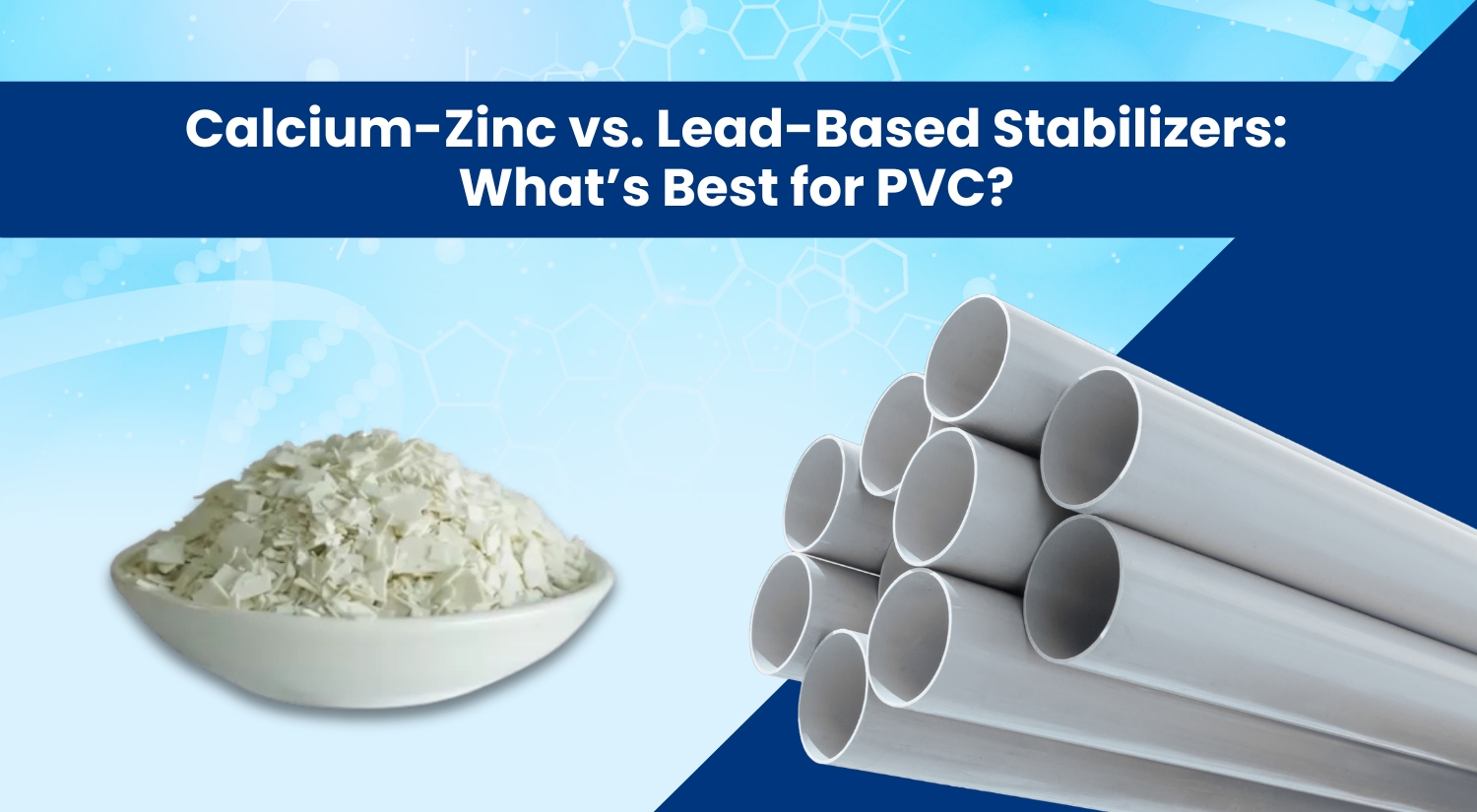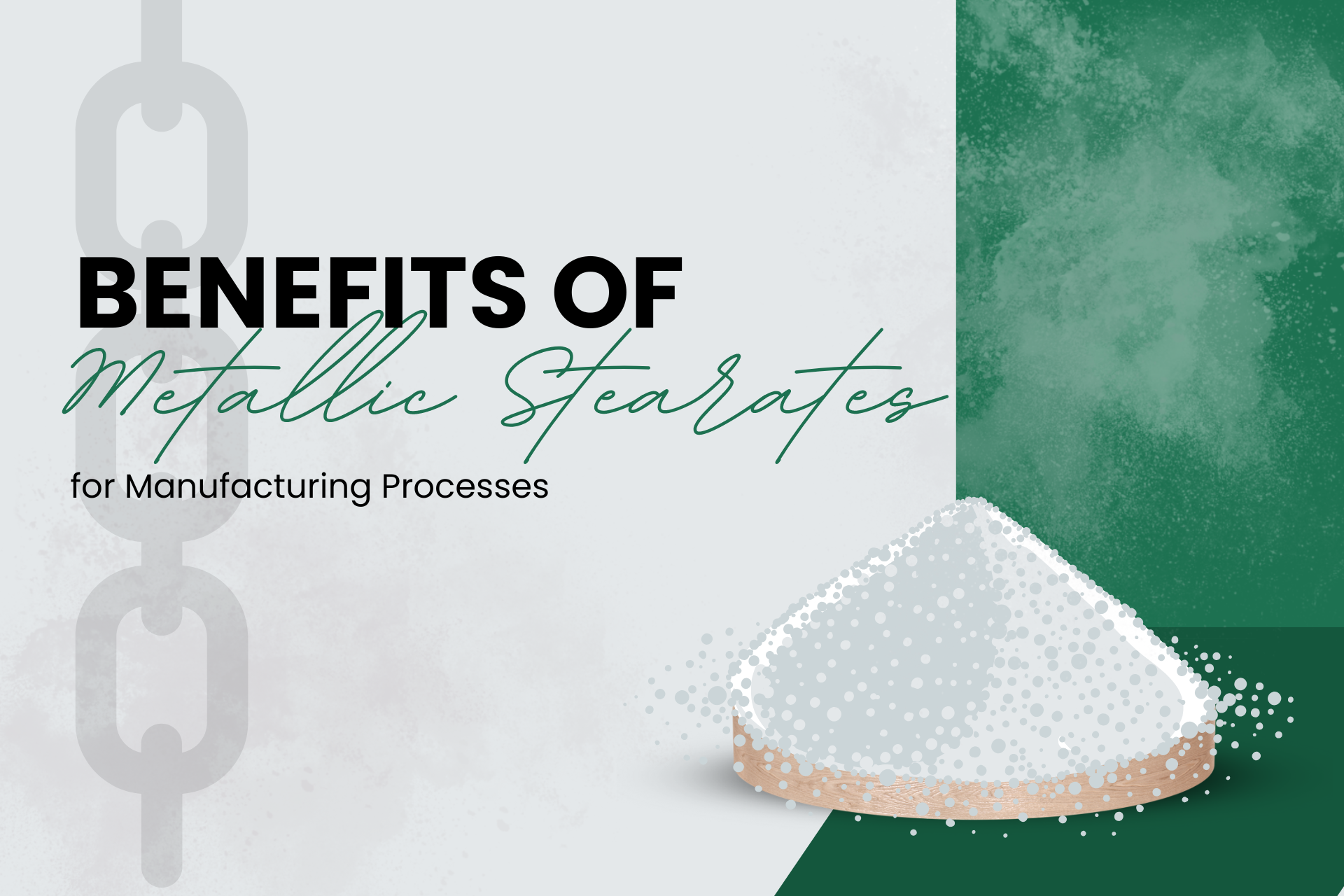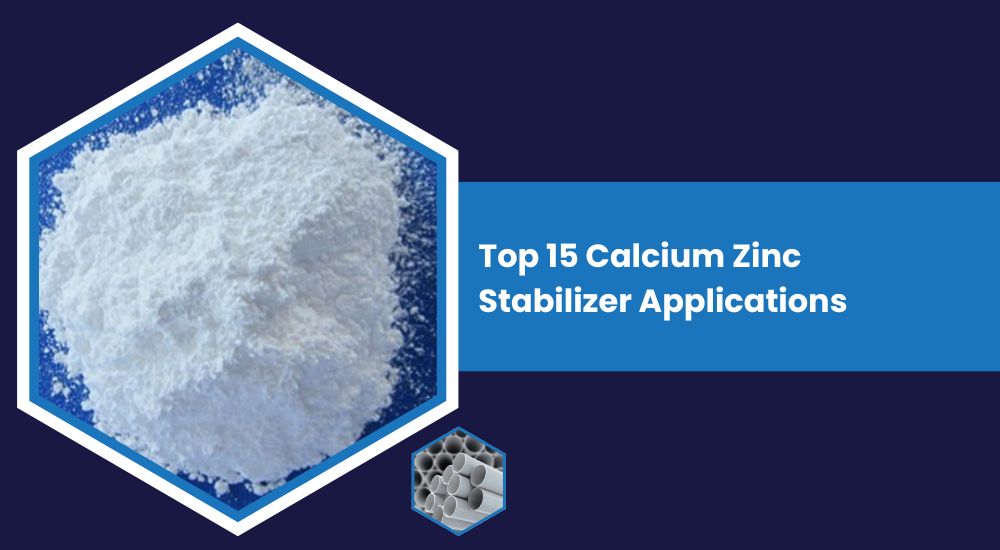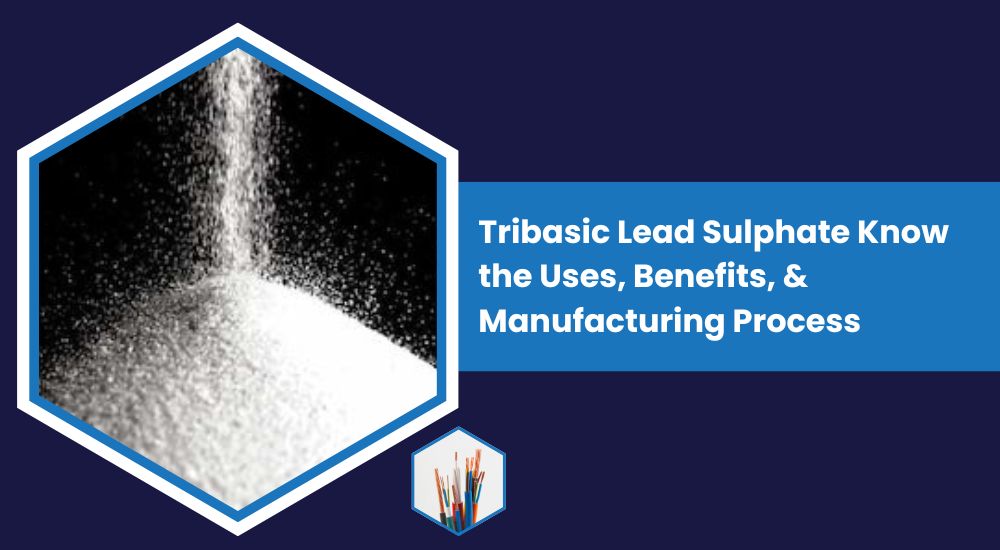
PVC or polyvinyl chloride is one of the most widely used plastics in the world. It is everywhere from water piping, cables, toys, and packaging. But, we need heat stabilizers to give it strength and heat resistance. The two main heat stabilizers are calcium-zinc and lead-based. Lead-based stabilizers were popular in the past.
Today, we have safer choices, such as calcium-zinc stabilizers. Sponsored by leading calcium zinc stabilizer manufacturers in India, these products are safe, effective, and eco-friendly. This blog explains how PVC heat stabilizers work. It compares calcium-zinc and lead-based types. This helps find the best fit for modern PVC products.
What Are Lead-Based Stabilizers?
Lead-based stabilization chemicals have been used in the PVC-making process for decades. Stabilizers keep PVC from degrading once manufacturers heat and process it. They help PVC stay strong but also flexible. They were the top pick for lead-based stabilizers in high-quality PVC pipes, window frames, and electrical cables. They provided excellent thermal stability and were less costly.
Pros of Lead-Based Stabilizers
Lead stabilizers have remained popular because they offer benefits, despite health concerns.
- Great Heat Stability: Lead-based stabilizers protect PVC from high temperatures during manufacturing. This helps keep PVC strong in tough conditions.
- Durable Performance: Lead-based stabilizers create tough products. They resist sunlight, heat, and wear. This makes them great for outdoor and industrial use.
- Low Cost: The low price is one of the many advantages of these lead-based stabilizers. Lead-based stabilizers used to be popular. They were cheaper than many other PVC heat stabilizers.
- Proven Track Record: Next, lead-based stabilizers emerged. They showed excellent performance in areas like pipes, profiles, and electrical wiring. Manufacturers accept and understand these stabilizers on a large scale because of this.
Cons of Lead-Based Stabilizers
Lead-based stabilizers work well, but they pose serious health and safety risks.
- Toxic to Humans and Animals: Lead is a shiny heavy metal. It can be very harmful if it gets inside a person or animal. It can slow brain growth in kids, harm different organs, and lead to serious illnesses in adults. This is a hazard of lead stabilizers in products for use in homes, schools, and hospitals.
- Environmental Pollution: Lead generally does not degrade in the environment. Throwing away PVC waste with lead stabilizers the wrong way will pollute the soil and water. This pollution can harm wildlife and enter the food chain.
- Not Safe for Food or Medical Use: Don’t use lead-based stabilizers in food items or health products. They can cause health issues. The demand for these stabilizers has gone down.
- Public Awareness and Brand Image: Customers are smarter now, they prefer products made from eco-friendly and non-toxic materials. A manufacturer using lead-based stabilizers risks damaging its brand reputation and trust.
Why Lead-Based Stabilizers Best for PVC?
- Great Heat Protection: Lead stabilizers protect the PVC from severe heat. This supports manufacturing and keeps the product strong in hot areas.
- Long-Lasting Performance: PVC goods manufactured with lead stabilizers last for many years. They remain intact in sunlight or adverse weather conditions.
- Cost-Effective: Lead-based stabilizers cost less than other PVC heat stabilizers. For companies trying to cut costs, this factor can prove essential.
- Easy to Use in Manufacturing: You can adjust the formulation a little or not at all for stability on some machines and production lines. This allows for faster and easier processes in some factories.
What Are Calcium-Zinc Stabilizers?
Calcium-zinc stabilizers are safer than lead-based ones. Calcium and zinc, which are safe for man and nature alike, make them. These stabilizers are safe. Manufacturers in India choose eco-friendly calcium-zinc stabilizers. They also meet global safety standards.
Pros of Calcium-Zinc Stabilizers
The advantages of calcium-zinc stabilizers in PVC manufacturing explain their popularity.
- Environment-Friendly: Calcium-zinc stabilizers won't turn the soil blue. They are safe and won't cause pollution. They are good recyclables. They break down in a manner that poses no risk to our environment, which helps our planet remain green.
- Excellent for Long-Term Use: Calcium-zinc stabilizers guard against heat and sunlight for years. Products made with calcium-zinc stabilizers usually do not crack or yellow. They stay strong and maintain their beauty for years.
- Safe for Food and Medical Use: Calcium-zinc stabilizers have no toxic elements. You can use them for packaging. They are great for food containers, drinking water pipes, and medical-grade PVC products.
- A Better Public Image: Calcium-zinc stabilizers prove that a company values health and the environment. This builds trust with customers and greatly improves the company's brand visibility.
Cons of Calcium-Zinc Stabilizers
Calcium-zinc stabilizers have benefits and can compete well in many areas. But, they also have some drawbacks to consider.
- Slightly Higher Cost: These stabilizers usually have a higher price compared to lead-based ones. They are safer and cleaner; hence, they adopt a more advanced manufacturing process.
- Needs Fine Tuning for Some Uses: Heavy industrial tasks may need calcium-zinc stabilizers. They can work with other additives to match the performance of lead-based stabilizers. This calls for careful testing and changes throughout the manufacturing process.
- Processing Challenges for Some Products: Some PVC items can be tricky for manufacturers. This is especially true for those that need high heat resistance. They may struggle if the calcium-zinc stabilizer doesn’t match the product well. A well-known calcium-zinc stabilizer maker in India offers customized solutions for different issues.
Why Calcium-Zinc Stabilizers Best for PVC?
When selecting calcium-zinc solutions for your PVC needs you will find these advantages:
- Safe for Humans: The absence of heavy metals makes these materials suitable for manufacturing.
- Environmentally Friendly: These stabilizers do not contaminate soil or water systems and can be effortlessly recycled.
- Excellent Long-Term Strength: These materials maintain their strength and color preservation properties throughout extended periods.
- Widely Accepted Worldwide: The use of these materials enables companies to distribute their PVC products across Europe, the USA, and other countries with strict regulatory standards.
Conclusion
PVC finds use as an important material in many of the constructions we use in everyday life. We need a stabilizer that keeps the material strong, safe, and durable. Countries once permitted lead-based stabilizers, but now they mostly prohibit them.
This is because they pose serious risks to human health and the environment. So, calcium-zinc stabilizers are safe, accepted worldwide, and high in performance. Many Calcium Zinc Stabilizer Manufacturers in India now produce eco-friendly products with pride. Choose calcium-zinc if you care about safety, quality, and the future.
Frequently Asked Questions
What is the role of a stabilizer in PVC?
During manufacturing, a stabilizer serves to protect PVC from heat. Without it, PVC can break, turn yellow, or lose strength. Using the right PVC heat stabilizers is key to creating durable products.
Are calcium-zinc stabilizers better than lead-based ones?
Yes. The use of calcium-zinc stabilizers provides both health safety and environmental protection. They work well in many PVC applications. They are approved for use in toys, pipes, and food packaging.
Why are lead-based stabilizers still used?
Lead-based stabilizers are still used. They are cost-effective and provide good thermal stability. Many companies are switching to calcium-zinc alternatives.
Where can I find reliable calcium-zinc stabilizers?
You can get them from reliable calcium-zinc stabilizer manufacturers in India. They offer high-quality stabilizers for many PVC products.



